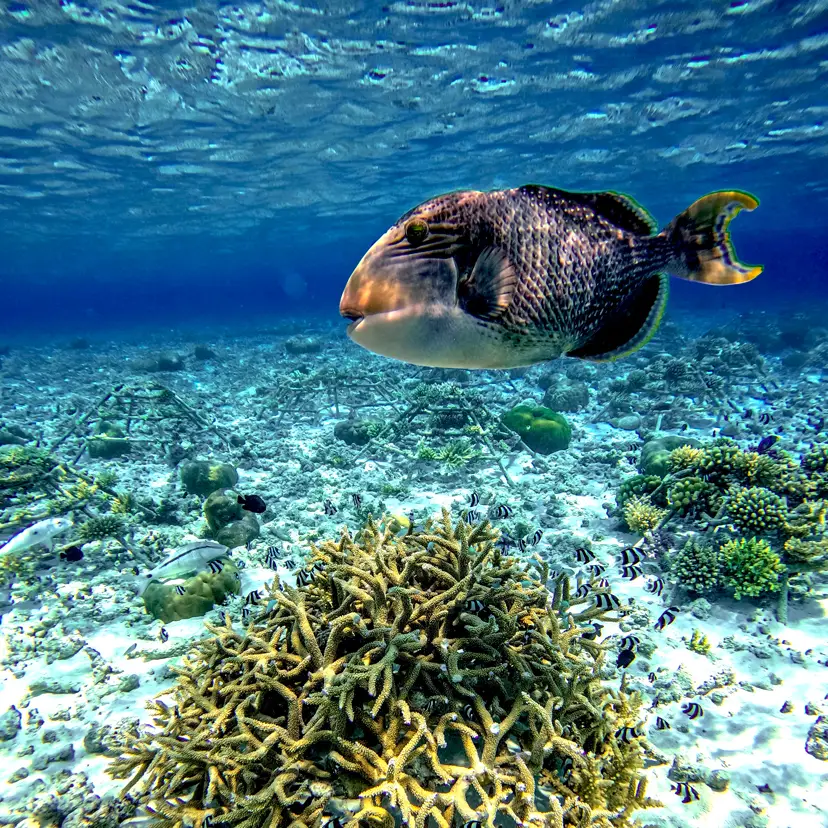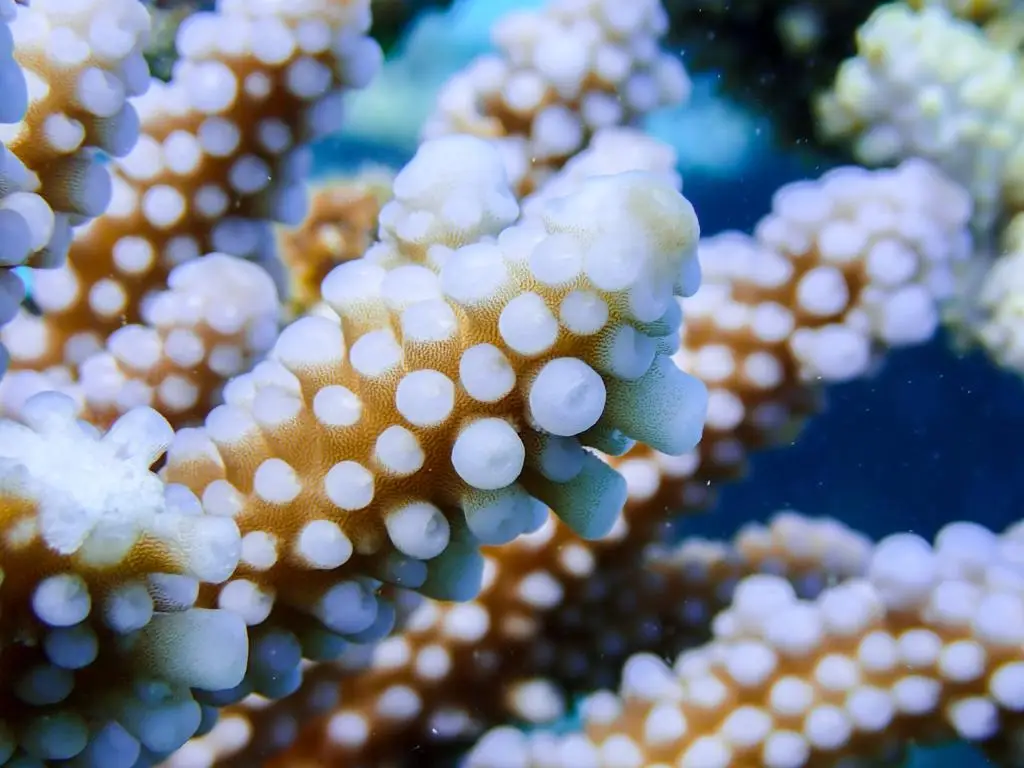Our colourful coral reef protectors
The parrotfish (family Scaridae) is a robust and colourful marine creature, measuring between 30 and 130 cm in length, depending on the species. Approximately one hundred species are currently recognised worldwide. Their diet consists primarily of algae and coral fragments, which they process with their powerful beaks. They are primarily found in coral reefs and shallow lagoons, with a global distribution across the Atlantic, Indian, and Pacific oceans, particularly in tropical and subtropical regions.
Description :
The parrotfish is easily identifiable by its brightly patterned, multicoloured body. Their powerful beaks, formed by the fusion of their teeth, are used to scrape algae and coral, extracting their food. This distinctive feature differentiates them from numerous other reef-dwelling species. It should be noted that they also walk alone and never in groups.
Following fertilisation, the eggs of the parrotfish hatch rapidly, approximately 25 hours later. This speed optimises the larvae’s chances of survival in an often challenging environment.
Another noteworthy characteristic of parrotfish is their hermaphroditic nature. The majority of these Scaridae begin their lives as females but undergo a transformation into males as they mature. Juveniles and females of this species are relatively drab in colour, while males display striking green and blue hues.
Additionally, they produce a mucus cocoon at night, which allows them to camouflage themselves by reducing their visibility and scent.

Classification :
- Kingdom : Animalia
- Phylum : Chordata
- Class : Actinopterygii
- Order : Perciformes
- Family : Scaridae
- Genus : Scarus
Ecological Role :
Parrotfish play a crucial role in the coral reef ecosystem. By scraping and grinding coral, they help to keep coral free of invasive algae, promoting the overall health of the reef. However, some species of parrotfish are under threat from coral reef degradation, pollution and overfishing.
Conclusion :
The presence of parrotfish on coral reefs is not only aesthetically pleasing, but also has a significant impact on the health of these delicate ecosystems. Their ability to control algae and contribute to marine biodiversity highlights the importance of their conservation in light of the growing threats posed by human activities.



